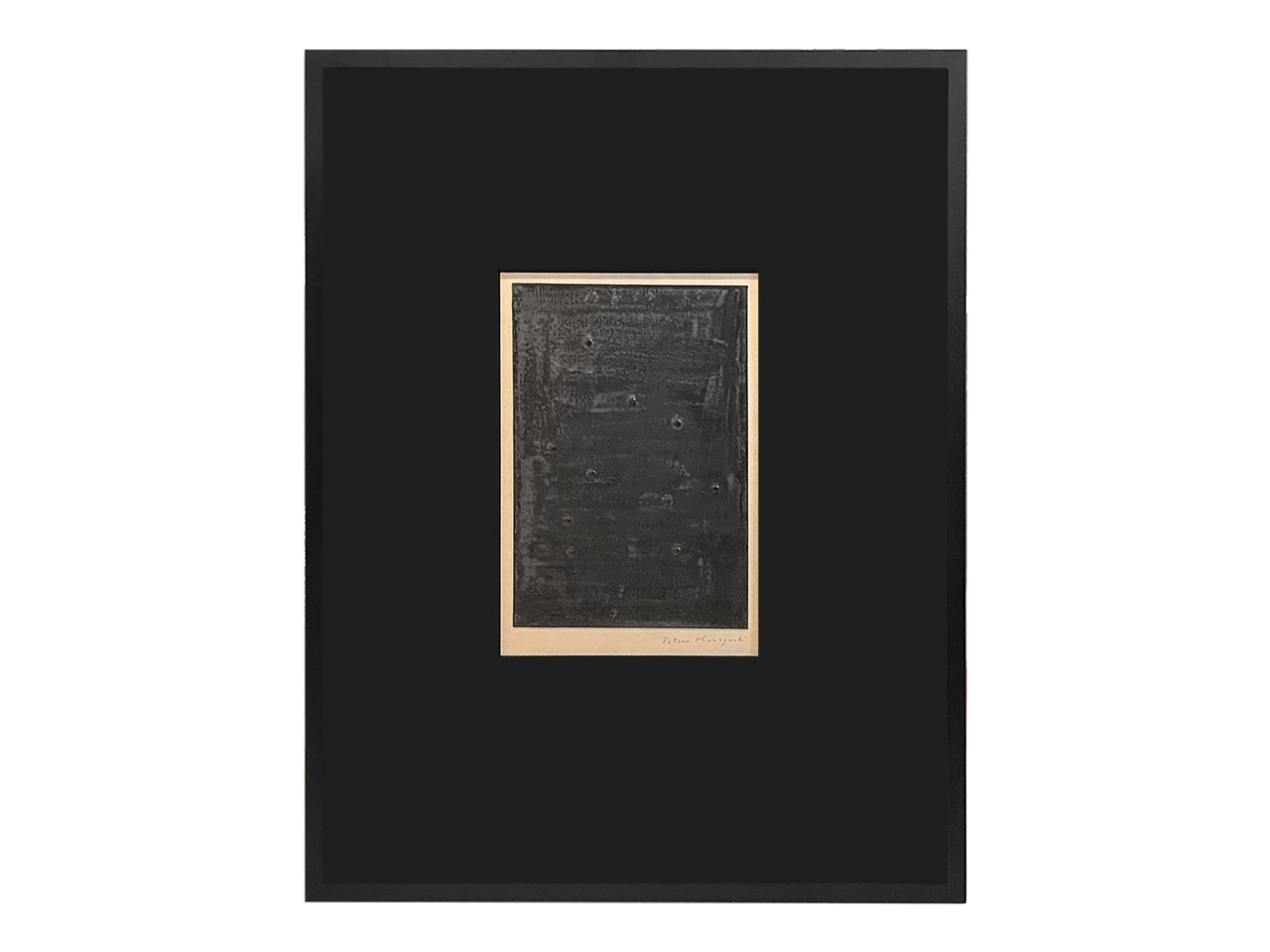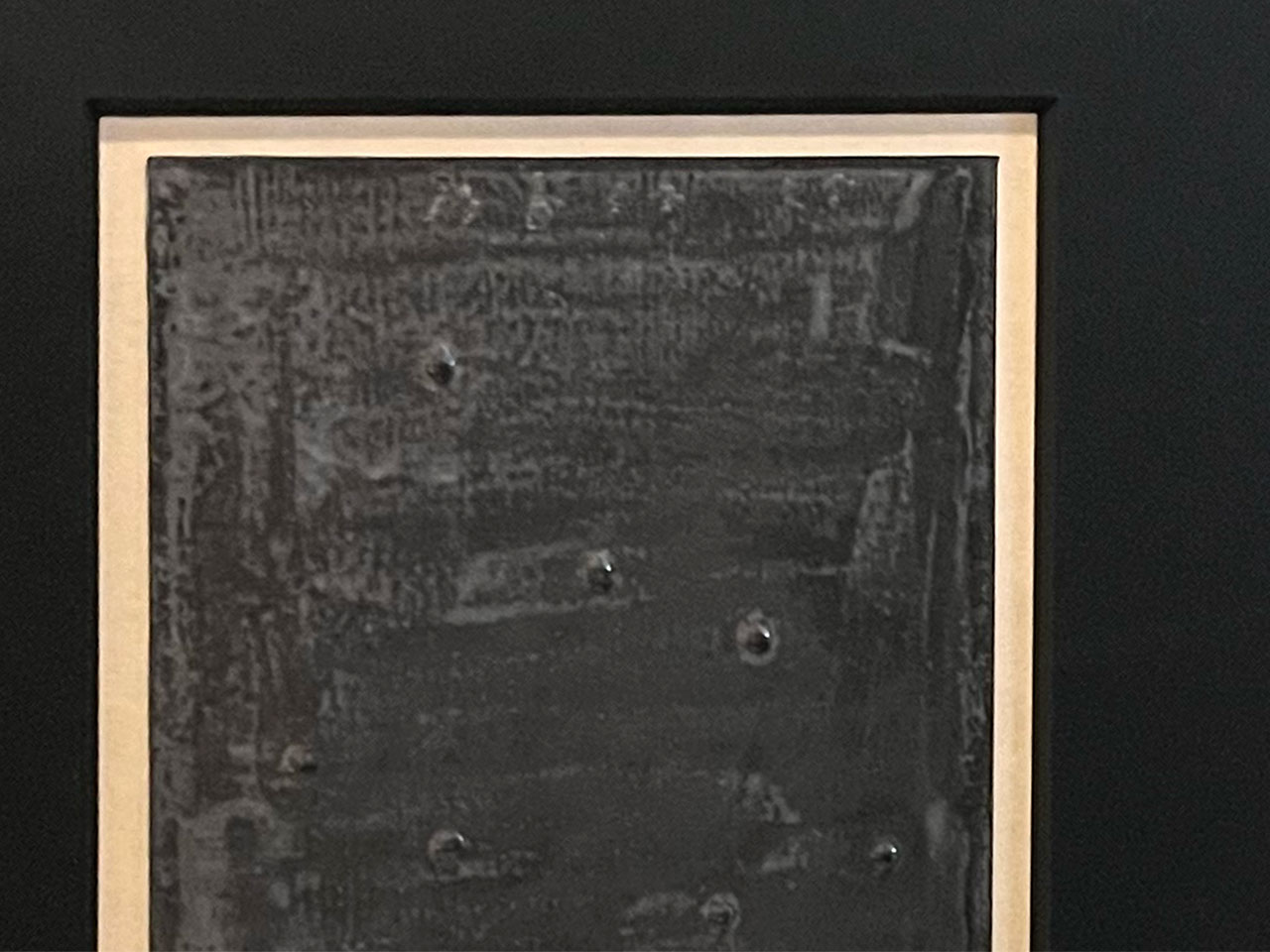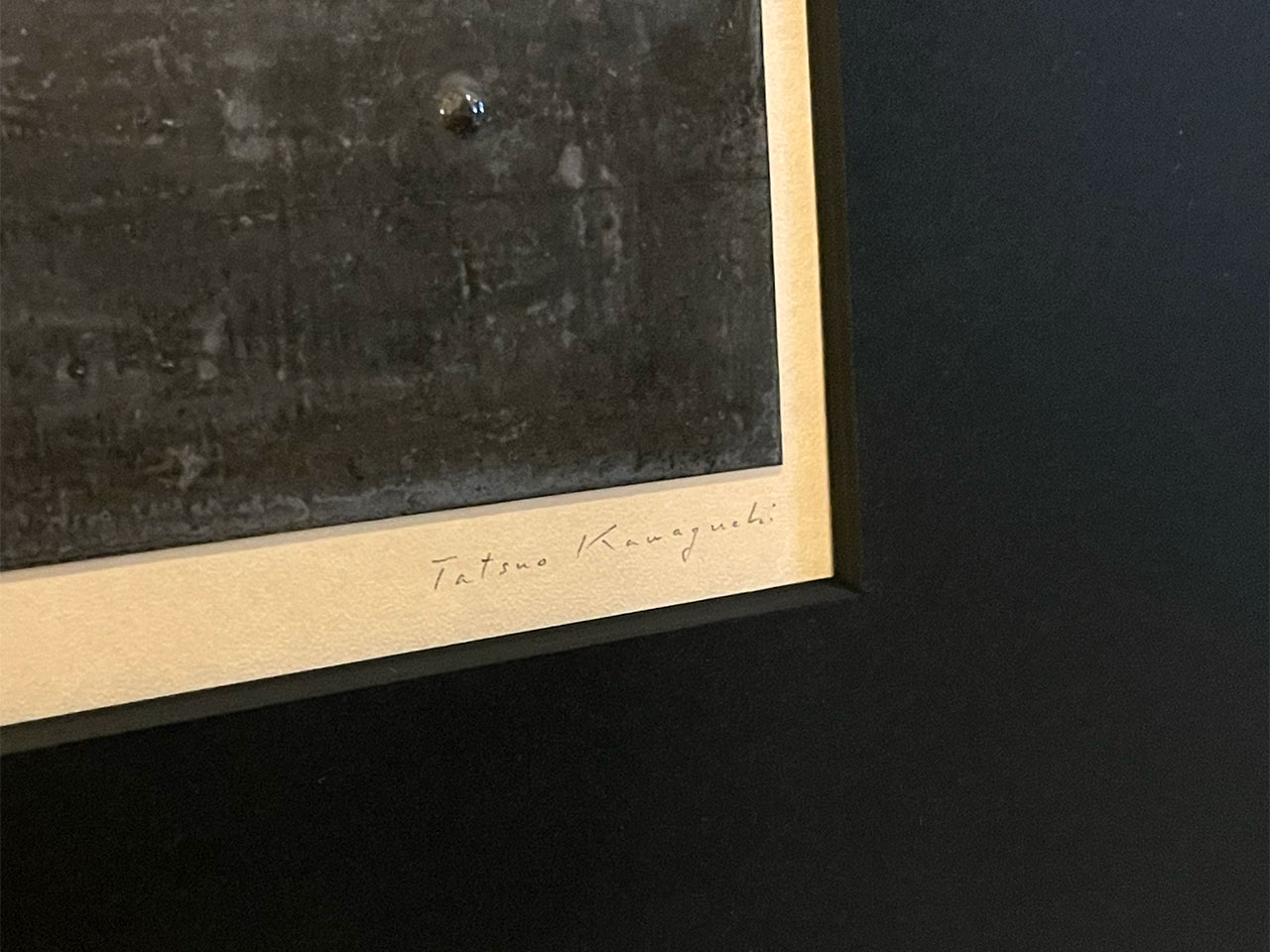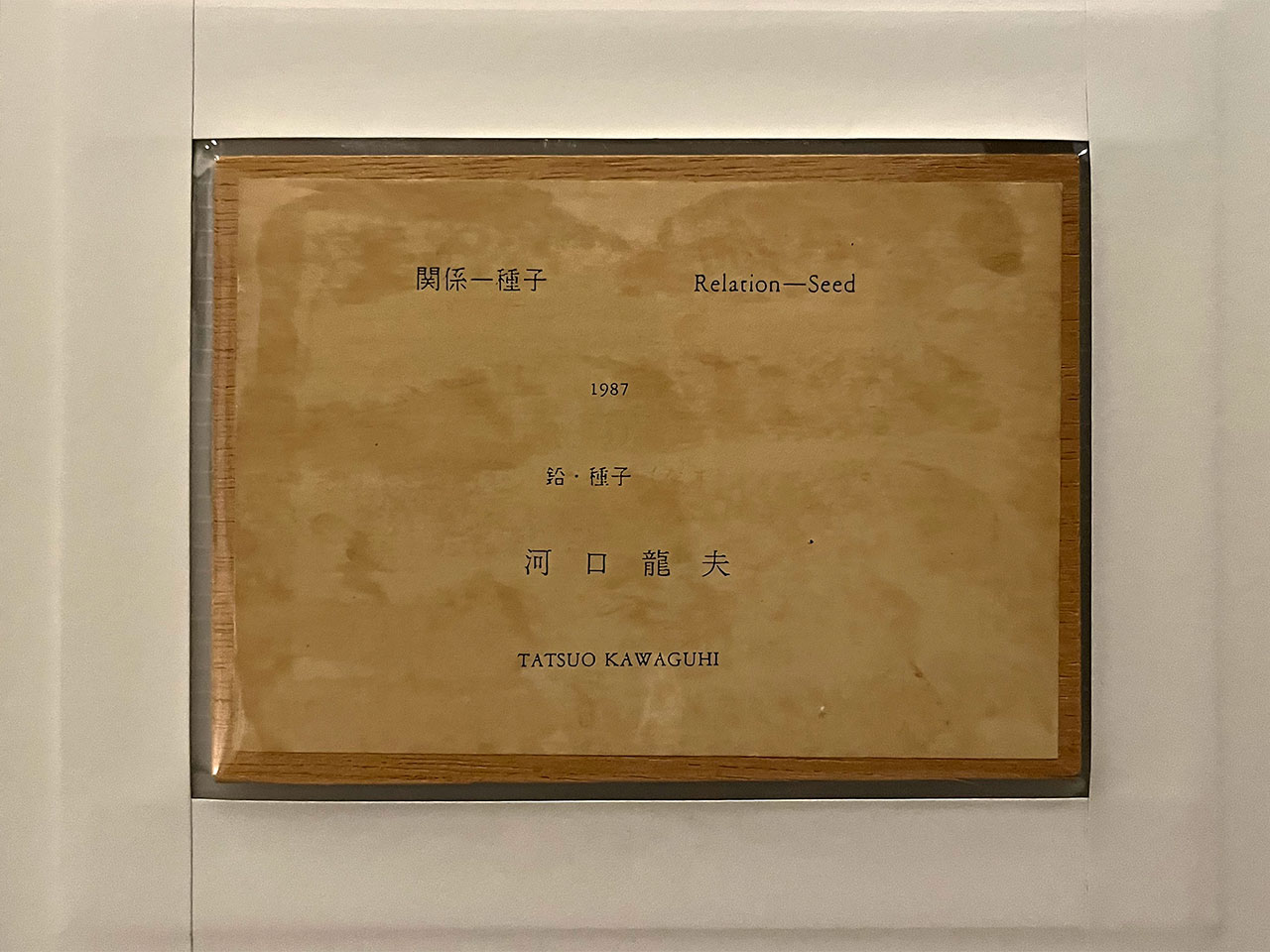河口 龍夫/Kawaguchi Tatsuo
河口龍夫(1940~)は、兵庫県神戸市出身、千葉県在住の現代美術家です。
多摩美術大学絵画科に在学中、河口は画家を志す一方で、絵画ではすくいあげることのできない新しい表現の可能性にも心惹かれていました。1962年に同大学を卒業後、1965年には神戸在住の若手芸術家たちとともに前衛美術家集団「グループ<位>(い)」を結成します。「世界とはなにか」という哲学的なテーマを掲げたこのグループの活動では、長良川河畔に巨大な穴を掘る実験的な作品【穴】(1965年)の制作や、メンバー全員がまったく同じ絵画を描き、個人の無化を試みる「非人称展」の開催など、集団で思考しながら、常識にとらわれない多様な手法で世界の成り立ちを探りました。
河口の創作において重要なテーマである「関係」が、はじめて作品のタイトルとなって現れたのは、1970年の「京都アンデパンダン」においてでした。それは、同展の出品手続きにかかわる領収書や申込書などの書類を横に並べて展示したもので、作家と作品、展覧会と美術館の、本来は目に見えないはずの「関係」を可視化した挑戦的な作品でした。その後も、河口は「言葉」と「もの」、「もの」と「エネルギー」、「エネルギー」と「時間」など、様々な「関係」に注目し、そのありようを独自の方法で表現していきます。たとえば、海岸線を1日がかりで定点撮影した26枚の写真からなる【陸と海】(1970年)では、潮の満ちひきの様子を通して地球と月の見えざる力関係を明らかにしています。また、この70年代においては、銅や鉄などの素材そのものを横に連ねたり、縦に積みあげたりする傾向がありました。
筑波大学の助教授として招かれ、神戸を去った1983年以降は、彼のもう一つの代名詞と言える鉛で覆われた種子をはじめ、蜜蝋で包みこんだ蓮の花托など、作風や使用する素材に変化が見られます。とりわけ、その内側に生命を宿す種子というモチーフは、あらゆる生命体と、それらを支配している超自然的エネルギーへの深い関心につながりました。また、そのような種子を、放射能を透過しない鉛で封印する行為には、1984年のチェルノブイリ原発事故を契機とする反核の思いが込められています。1990年代からは、「関係」に対する河口の解釈も徐々に拡大していきます。具体的な成果としては、化石をフロッタージュ(擦り出し)したものを、生命エネルギーの象徴としての蜜蝋を塗った黄色い箱で閉じこめ、それらを関係づけることにより、絶滅した生物の再生を予感させる造形物や、新聞を素材として利用し、芸術とそれ以外のモチーフの「関係」を広げようとする試みなどが挙げられます。このように、目に見えない新たな「関係」を創造し、実体化していくことで、今ここにある世界というものを問い直していく河口の作品は、鑑賞者の想像力や五感を解き放ち、彼が言うところの「精神の冒険」へと旅立たせてくれます。
Tatsuo Kawaguchi (1940-) is a contemporary artist from Kobe, Hyogo Prefecture, currently residing in Chiba Prefecture.
While studying in the Painting Department at Tama Art University, Kawaguchi aspired to become a painter but was also fascinated by new expressive possibilities that couldn’t be captured through painting. After graduating from the university in 1962, he formed the avant-garde artist group “Group” in 1965 with young artists from Kobe. This group, which explored the philosophical theme of “What is the world?”, engaged in experimental works such as digging a huge hole on the banks of the Nagara River for the piece “Hole” (1965) and holding the “Non-Person Exhibition” where all members created identical paintings to nullify individuality. These activities reflected their collective thinking and diverse approaches to exploring the world’s essence beyond conventional norms.
The theme of “relationships”, key to Kawaguchi’s work, first appeared as a title in his piece at the “Kyoto Independents” in 1970. This work displayed documents related to the exhibition, such as receipts and application forms, side by side, visualizing the usually invisible “relationship” between the artist, the artwork, the exhibition, and the museum. Kawaguchi continued to focus on various “relationships”, such as between “words” and “things”, “things” and “energy”, and “energy” and “time”, expressing their nature in his unique way. For example, in “Land and Sea” (1970), a series of 26 photographs taken over a day along the coastline, he revealed the unseen gravitational relationship between the Earth and the Moon through the tides. During the 1970s, his works often involved arranging materials like copper and iron horizontally or stacking them vertically.
After being invited to Tsukuba University as an associate professor in 1983 and leaving Kobe, his style and materials changed, notably featuring lead-covered seeds, another of his signatures, and lotus seed pods encased in beeswax. The motif of seeds, embodying life within, connected to his deep interest in all living things and the supernatural energy governing them. Sealing these seeds in lead, which blocks radiation, reflected his anti-nuclear sentiment following the 1984 Chernobyl disaster. From the 1990s onwards, Kawaguchi’s interpretation of “relationships” gradually expanded. Specific achievements included creating sculptural pieces that evoked the revival of extinct organisms by enclosing fossil frottages (rubbings) in yellow beeswax-coated boxes symbolizing life energy and attempts to broaden the “relationship” between art and other motifs by using newspapers as a material. By creating and materializing new, unseen “relationships”, Kawaguchi’s works encourage viewers to reconsider the world around them, unleashing their imagination and senses and taking them on what he calls a “spiritual adventure”.




作品名:関係ー種子
サイズ:21×15cm(1987年 紙に鉛・種子)
価格:SOLD OUT
価格は税抜き表示です

